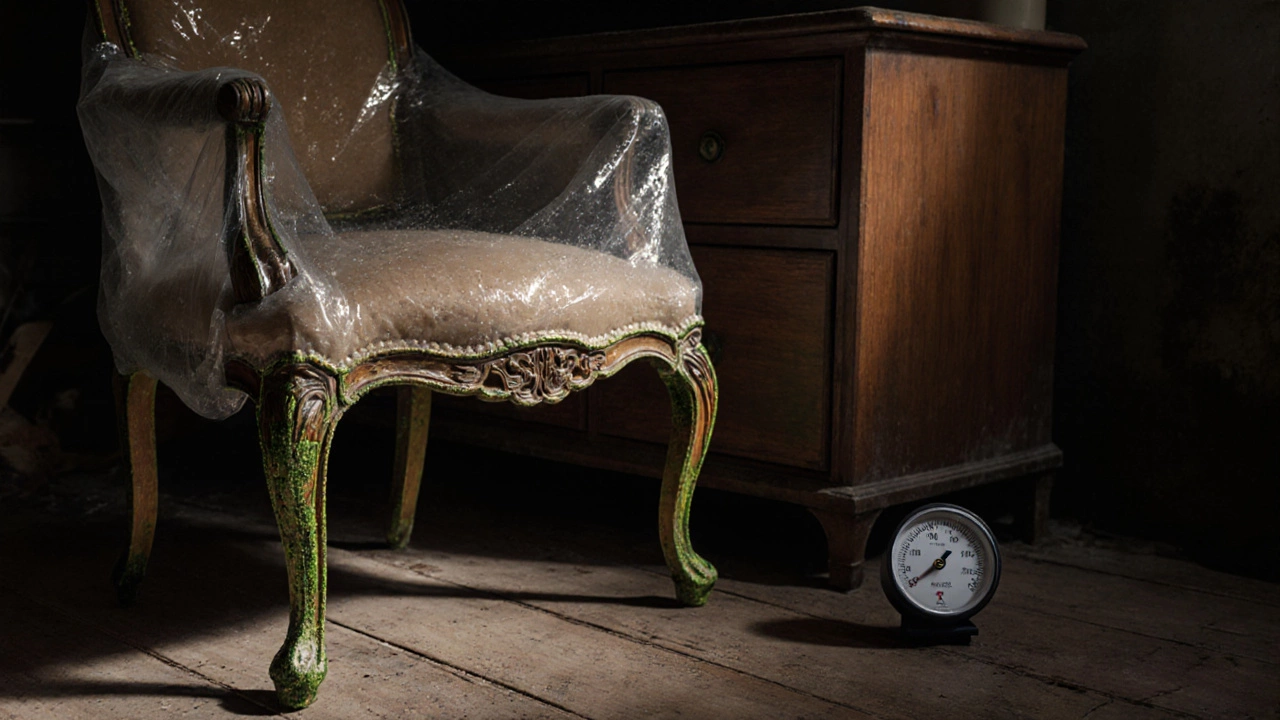When you own handcrafted wood furniture, mold isn’t just an eyesore—it’s a threat to its structure and your health. mold on wood furniture, a type of fungal growth that thrives in damp, poorly ventilated spaces. Also known as wood rot or mildew, it doesn’t just stain your pieces—it eats away at the fibers, weakens joints, and can spread to other items in your home. In the UK, where damp winters and high indoor humidity are common, even the best-made furniture isn’t safe if it’s stored or placed wrong.
humidity control, the practice of managing moisture levels in your home to protect materials like wood is the first line of defense. You don’t need fancy gadgets—just a $15 hygrometer from any hardware store can tell you if your room hits 60% relative humidity or higher, the danger zone for mold. Keep it below 50%. Use dehumidifiers in basements, crawl spaces, or rooms with little airflow. Open windows after showers or cooking. Even a simple fan near your furniture can move stagnant air and dry out moisture before mold takes root.
furniture storage tips, methods to safely store wooden pieces during off-seasons or moves matter just as much as daily care. Never stack furniture against exterior walls. Avoid placing it directly on concrete floors—use wooden pallets or risers. Wrap items in breathable cotton sheets, not plastic or bubble wrap, which traps moisture. If you’re storing pieces long-term, leave space between them. One study from the UK Furniture Conservation Group found that furniture stored with at least 6 inches of air space around it had 70% less mold growth than tightly packed items.
Don’t ignore the little things. Wipe down surfaces after rainy days. Keep plants away from wooden tables and sideboards—soil moisture evaporates and raises local humidity. Use silica gel packs inside drawers or cabinets. Clean dust regularly; it holds moisture and gives mold spores a place to settle. If you spot a tiny dark spot, don’t wait. Scrub it gently with a mix of white vinegar and water, then dry it completely. Mold spreads fast, especially on unfinished or oiled wood.
You might think your solid oak dining table is invincible. But even the best wood can rot if left in the wrong environment. The same piece that lasts 50 years in a dry, sunny room might fail in 5 if it’s tucked behind a curtain in a damp hallway. That’s why prevention isn’t optional—it’s part of caring for your furniture like you care for your home.
Below, you’ll find real, tested advice from people who’ve dealt with damp furniture in UK homes—from basement storage disasters to cottage living in the rain. You’ll learn what works, what doesn’t, and how to keep your wood looking and feeling like it should—solid, clean, and lasting.

Learn how to protect furniture from mold in storage with simple, proven steps that work in damp climates. Avoid costly damage with humidity control, proper cleaning, and smart storage practices.
More